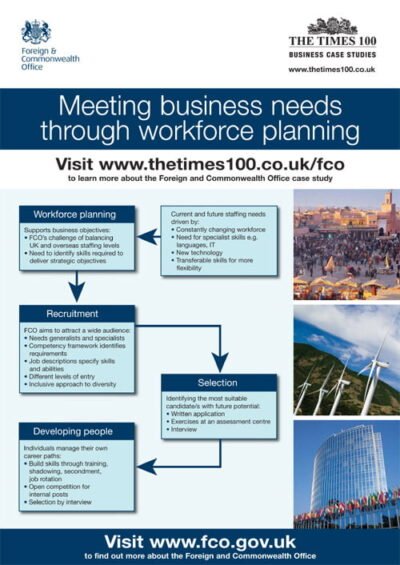In the contemporary business landscape, where competition is fierce and consumer preferences are ever-evolving, brand growth planning has emerged as a critical component for sustained success. This strategic approach involves a comprehensive analysis of a brand’s current position in the market, the identification of growth opportunities, and the formulation of actionable plans to achieve desired outcomes. Brand growth planning is not merely about increasing sales or market share; it encompasses a holistic view of how a brand can evolve, resonate with its audience, and maintain relevance over time.
The process of brand growth planning requires a deep understanding of both internal capabilities and external market dynamics. Companies must assess their strengths and weaknesses while also considering the competitive landscape and consumer trends. This dual focus enables brands to craft strategies that are not only ambitious but also grounded in reality.
As businesses navigate through various stages of growth, from start-up to maturity, the importance of a well-structured brand growth plan cannot be overstated. It serves as a roadmap that guides decision-making and resource allocation, ensuring that every effort is aligned with the overarching vision for the brand.
Summary
- Brand growth planning is essential for the long-term success and sustainability of a business.
- Understanding the importance of brand growth planning helps in creating a clear roadmap for the future.
- Key components of brand growth planning include market analysis, customer segmentation, and competitive positioning.
- Setting specific and measurable goals is crucial for tracking the progress of brand growth.
- Developing a brand growth strategy involves identifying target markets, creating a unique value proposition, and selecting appropriate marketing channels.
Understanding the Importance of Brand Growth Planning
The significance of brand growth planning lies in its ability to provide clarity and direction in an increasingly complex marketplace. A well-defined growth plan allows organisations to articulate their vision and mission clearly, ensuring that all stakeholders are aligned towards common objectives. This alignment is crucial, as it fosters a sense of purpose among employees and creates a cohesive brand identity that resonates with consumers.
When everyone within the organisation understands the brand’s goals, it enhances collaboration and drives collective efforts towards achieving those objectives. Moreover, brand growth planning enables businesses to anticipate changes in the market and adapt accordingly. In an era characterised by rapid technological advancements and shifting consumer behaviours, brands that fail to plan for growth risk becoming obsolete.
By proactively identifying potential challenges and opportunities, companies can develop contingency plans that mitigate risks while capitalising on emerging trends. This forward-thinking approach not only safeguards the brand’s current position but also paves the way for future expansion and innovation.
Key Components of Brand Growth Planning

A robust brand growth plan comprises several key components that work in tandem to create a comprehensive strategy. Firstly, market research is paramount; it provides insights into consumer preferences, competitive dynamics, and industry trends. By leveraging qualitative and quantitative data, brands can identify gaps in the market and areas for potential growth.
This research should encompass both primary data collection methods, such as surveys and focus groups, as well as secondary data analysis from industry reports and market studies. Secondly, a thorough SWOT analysis (Strengths, Weaknesses, Opportunities, Threats) is essential for understanding the internal and external factors that influence brand performance. This analytical tool helps organisations pinpoint their unique selling propositions while also recognising areas that require improvement.
By evaluating both opportunities for growth and potential threats from competitors or market shifts, brands can develop strategies that leverage their strengths while addressing vulnerabilities. Another critical component is the establishment of a clear value proposition. A compelling value proposition articulates what sets a brand apart from its competitors and why consumers should choose it over others.
This statement should be concise yet powerful, encapsulating the essence of the brand’s promise to its customers. A well-defined value proposition not only guides marketing efforts but also informs product development and customer service strategies.
Setting Goals and Objectives for Brand Growth
Once the foundational components are in place, the next step in brand growth planning involves setting specific goals and objectives. These should be SMART: Specific, Measurable, Achievable, Relevant, and Time-bound. For instance, a brand may aim to increase its market share by 15% within two years by targeting a new demographic segment or launching a new product line.
Such clarity in goal-setting ensures that all team members understand what success looks like and can work towards it cohesively. In addition to quantitative goals, qualitative objectives should also be considered. These might include enhancing brand awareness or improving customer satisfaction scores.
While these metrics may be more challenging to measure directly, they play a crucial role in shaping consumer perceptions and fostering loyalty. By balancing both quantitative and qualitative objectives, brands can create a more holistic approach to growth that encompasses not just financial performance but also customer engagement and brand equity.
Developing a Brand Growth Strategy
With clear goals established, organisations can begin to develop a comprehensive brand growth strategy. This strategy should outline the specific actions required to achieve the set objectives while considering available resources and potential constraints. A multi-faceted approach often yields the best results; this may include diversifying product offerings, expanding into new markets, or enhancing digital marketing efforts.
For example, a fashion retailer seeking to grow its online presence might invest in search engine optimisation (SEO) to improve visibility on search engines while simultaneously launching targeted social media campaigns to engage younger consumers. Additionally, partnerships with influencers or collaborations with other brands can amplify reach and create buzz around new product launches. The key is to ensure that all initiatives are aligned with the brand’s core values and resonate with its target audience.
Furthermore, it is essential to incorporate feedback mechanisms into the strategy development process. Engaging with customers through surveys or social media interactions can provide valuable insights into their preferences and expectations. This feedback loop allows brands to refine their strategies continuously, ensuring they remain relevant and responsive to changing consumer needs.
Implementing and Monitoring Brand Growth Plans

The successful implementation of a brand growth plan requires meticulous execution and ongoing monitoring. It is vital to assign clear responsibilities to team members and establish timelines for each initiative outlined in the strategy. Regular check-ins and progress reviews can help ensure that everyone remains accountable and that any obstacles are addressed promptly.
Monitoring key performance indicators (KPIs) is crucial during this phase. These metrics should align with the goals set earlier in the planning process and may include sales figures, website traffic, social media engagement rates, or customer retention rates. By tracking these indicators regularly, brands can gauge the effectiveness of their strategies and make data-driven adjustments as necessary.
Moreover, fostering a culture of adaptability within the organisation is essential for navigating unforeseen challenges or opportunities that may arise during implementation. Encouraging teams to share insights and learnings can lead to innovative solutions that enhance overall performance. This collaborative approach not only strengthens team dynamics but also cultivates an environment where continuous improvement is valued.
Evaluating the Success of Brand Growth Planning
Evaluating the success of brand growth planning is an ongoing process that extends beyond initial implementation. It involves analysing performance against established goals and objectives to determine whether the desired outcomes have been achieved. This evaluation should encompass both quantitative metrics—such as revenue growth or market share increases—and qualitative assessments related to brand perception and customer satisfaction.
Conducting post-implementation reviews allows organisations to identify what worked well and what could be improved in future planning cycles. Gathering feedback from employees involved in executing the plan can provide valuable insights into operational efficiencies or challenges faced during implementation. Additionally, soliciting input from customers through surveys or focus groups can shed light on their experiences with the brand during this period of growth.
It is also important to recognise that brand growth is not a linear journey; it often involves setbacks as well as successes. Therefore, organisations should approach evaluation with an open mind, ready to learn from both positive outcomes and challenges encountered along the way. This reflective practice fosters resilience within the organisation and encourages a proactive mindset towards future growth initiatives.
Conclusion and Next Steps for Brand Growth Planning
As businesses continue to navigate an ever-changing marketplace, effective brand growth planning will remain a cornerstone of strategic success. The insights gained from thorough research, goal-setting, strategy development, implementation monitoring, and evaluation create a robust framework for sustainable growth. Brands that embrace this comprehensive approach are better positioned to adapt to market shifts while maintaining strong connections with their customers.
Moving forward, organisations should prioritise continuous learning within their brand growth planning processes. This includes staying abreast of industry trends, consumer behaviour shifts, and emerging technologies that could impact their strategies. By fostering an agile mindset and encouraging innovation at all levels of the organisation, brands can ensure they remain competitive in an increasingly dynamic environment.
Ultimately, successful brand growth planning is about more than just achieving short-term gains; it is about building a resilient brand that can thrive over time. As companies embark on this journey, they must remain committed to their core values while being open to new ideas and approaches that will drive long-term success in an ever-evolving marketplace.
Brand growth planning is crucial for the success of any business, as discussed in the article Importance of Portable Workbenches in Work and How to Buy It. This article highlights the significance of strategic planning in expanding a brand’s reach and increasing its market share. By implementing effective growth strategies, businesses can stay ahead of the competition and achieve long-term success. It is essential for companies to carefully plan and execute their brand growth strategies to ensure sustainable growth and profitability.
FAQs
What is Brand Growth Planning?
Brand growth planning is a strategic process that involves developing and implementing a plan to increase a brand’s market share, revenue, and overall brand value. It involves setting clear objectives, identifying growth opportunities, and creating a roadmap for achieving sustainable growth.
Why is Brand Growth Planning important?
Brand growth planning is important because it helps businesses to stay competitive in the market, adapt to changing consumer preferences, and drive long-term success. It provides a structured approach to expanding a brand’s reach, increasing its customer base, and maximising its profitability.
What are the key components of Brand Growth Planning?
The key components of brand growth planning include market analysis, identifying target audience, setting growth objectives, developing marketing strategies, allocating resources, monitoring performance, and making adjustments as needed. It also involves understanding the competitive landscape and consumer trends.
How does Brand Growth Planning differ from traditional marketing planning?
Brand growth planning goes beyond traditional marketing planning by focusing on long-term brand development and sustainable growth. While traditional marketing planning may be more short-term and campaign-focused, brand growth planning takes a holistic approach to building and expanding the brand over time.
What are some common strategies used in Brand Growth Planning?
Common strategies used in brand growth planning include product diversification, market expansion, brand positioning, customer retention, innovation, and strategic partnerships. These strategies are aimed at increasing brand awareness, customer loyalty, and market share.
 Tesco A3 ePoster Edition 15 "Motivation theory in practice at Tesco"
Tesco A3 ePoster Edition 15 "Motivation theory in practice at Tesco"  Legal Services Commission A3 ePoster Edition 15 "The advantages of centralisation"
Legal Services Commission A3 ePoster Edition 15 "The advantages of centralisation"  Tarmac A3 ePoster Edition 15 "Developing a Human Resource strategy"
Tarmac A3 ePoster Edition 15 "Developing a Human Resource strategy"  Parcelforce A3 ePoster Edition 14 "Using the marketing mix to drive change"
Parcelforce A3 ePoster Edition 14 "Using the marketing mix to drive change"  Tesco A3 ePoster Edition 18 "Visions, values and business strategies"
Tesco A3 ePoster Edition 18 "Visions, values and business strategies"  Legal Services Commission A3 ePoster Edition 13 "Using PEST analysis to identify external influences"
Legal Services Commission A3 ePoster Edition 13 "Using PEST analysis to identify external influences"  Building a multi-utility business (PDF)
Building a multi-utility business (PDF)  Foreign Commonwealth Office A3 ePoster Edition 15 "Meeting business needs through workforce planning"
Foreign Commonwealth Office A3 ePoster Edition 15 "Meeting business needs through workforce planning" 